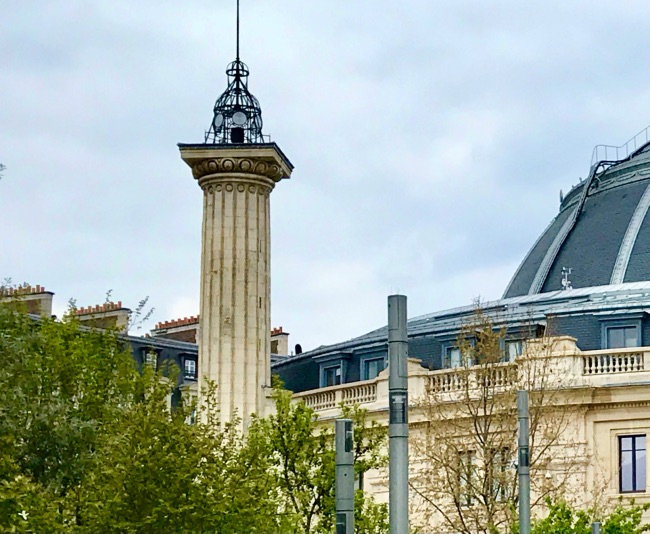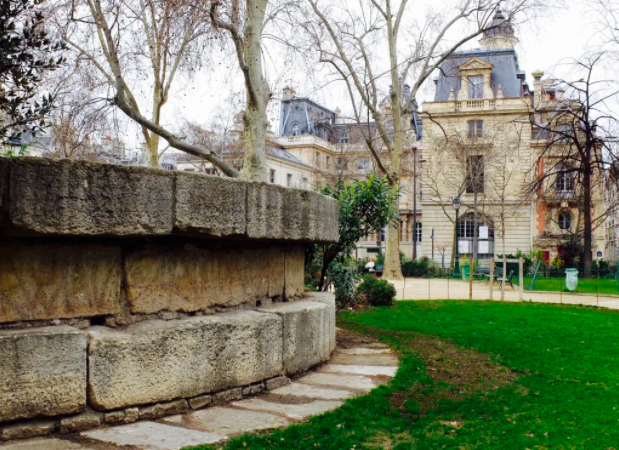Paris isn’t only about its world-famous sites like Notre Dame, the Eiffel Tower and the Champs Elysées. In fact, the city has dozens, in not hundreds, or curious places which date for different eras of the city and tell its story. From the Medieval towers to the remnants of the Bastille fortress, here are some fascinating sites to take you off the beaten path in Paris.

The Medici Column
Many people are currently flocking to visit the newly (re)opened Bourse de Commerce, now home to the Pinault collection of contemporary art (more on it here), however, rising behind its dome is a very curious site. The area used to house a palace, the Hôtel de Soissons, which was inhabited by Queen Catherine de Medici after her husband King Henri II’s death in 1559. The Queen was very interested in the occult and she even called Nostradamus to Paris to advise her on the future. She had this 28-meter-high column built in 1575 as a the lookout point for her astrologer Cosimo Ruggieri. While its 145 steps are closed to the public, you can admire it from the ground level. Be sure to look out for its decoration of the royal couple’s emblem of an intertwined H and C as well as cornucopia and broken mirrors.
Address: behind 2 Rue de Viarmes, 75001 Paris

Tour Jean-sans-Peur
Tucked amidst the buildings of the busy rue Etienne Marcel is an out-of-place ancient tower. A rare medieval building in Paris, the Tour Jean-sans-Peur dates back to the early 1400s and is all that remains of the palace of the Dukes of Burgundy which once stood here. The 21 metre-high tower is also the tallest medieval civic building in the city. It’s open to the public and displays temporary exhibits on medieval themes.
Address: 20 Rue Étienne Marcel, 75002 Paris
Remains of the Bastille
Lots of people who come to Paris exit the Bastille métro station and Bastille fortress is. The symbol of the outbreak of the Revolution, the Bastille was gradually torn down and the smaller artefacts were sold off as collector’s items like pieces of the Berlin Wall. Many of the larger blocks of the fortress were used to build the Concorde Bridge, which crosses the Seine from Place de la Concorde to l’Assemblée Nationale. In the métro on the platform of line 5, there are relics of where the fortress stood and then there is a regrouping of one of the Bastille’s towers hidden in the shrubs of this little park near the Seine, the Square Henri Galli. Called the “Liberté” tower, it was uncovered in 1899 at the start of rue Saint-Antoine during the construction of the métro line 1 and then moved here.
Address: 9 Bd Henri IV, 75004 Paris
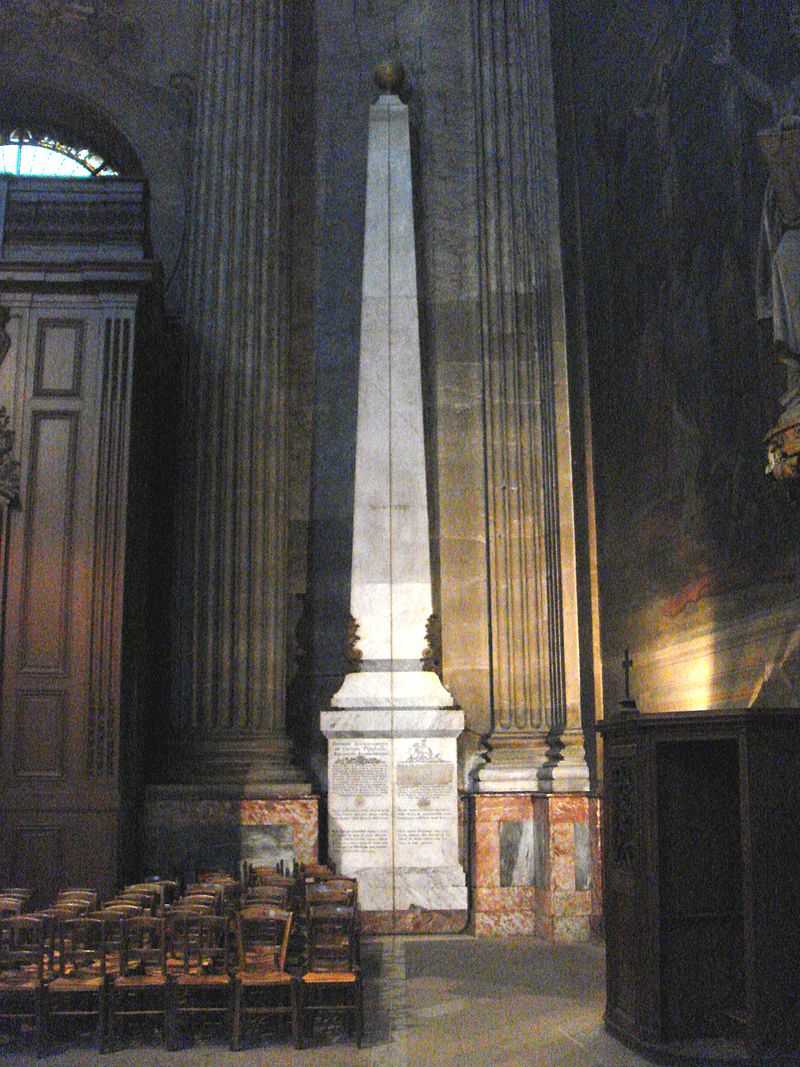
Gnomon, Saint Sulpice. PHGCOM / CC
Gnomon of Saint Sulpice
When Dan Brown published his bestselling book The Da Vinci Code in 2003, this lesser known Left Bank church was thrown into the spotlight. People from around the globe came to see the unusual obelisk he described as marking the Paris Meridian or “Rose Line. Although Brown’s facts weren’t entirely accurate, the object is indeed fascinating and historic. Built in the early 1700s, the or obelisk, or gnomon, was an astronomical instrument used to determine the date of Easter thanks to a shadow cast on the obelisk. When you’re visiting the church, which also happens to be the second largest in Paris after Notre Dame, be sure to view the wonderful paintings by Delacroix found in the chapel on the right of the entrance.
Address: Place Saint-Sulpice, 75006 Paris
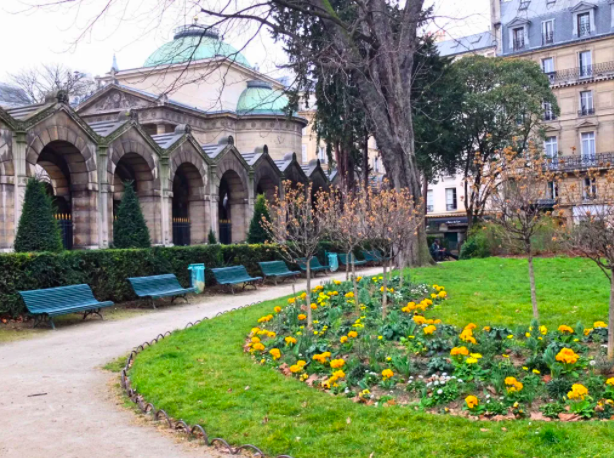
Expiatory Chapel
This lesser known site located near the Madeleine Church is one of the most hidden and mysterious sites in Paris. The land around this small square used to hold the Madeleine cemetery. It was here where Louis XVI and Marie Antoinette were first buried after their guillotining in 1793 in nearby Place de la Concorde. After the final defeat of Napoleon and the restoration of the monarchy in 1815, their bodies were moved to the Cathedral of Saint Denis (which houses the tombs of most French royals). In 1826 the cemetery was replaced by the Expiatory Chapel, a homage to the tragic royal couple, funded by their daughter, Marie-Therèse and the next king, Louis XVIII. In the crypt there’s a black and white marble altar sitting on the spot where the King and Queen’s remains were found. The chapel can be visited on weekends.
Address: 29 Rue Pasquier, 75008 Paris

Château de la Reine Blanche. Photo: Siren-Com/ CC
Le Château de la Reine Blanche
Called the Castle of the White Queen, this residence was built in 1290 by the Queen Marguerite de Provence, although it was named after her daughter, Blanche de France, who inherited the manor house. It was constructed next to what was Paris’s second river, la Bièvre, which is still flows underground. The small castle is privately owned and but can often be visited on the Journées du Patrimoine (European Heritage Days) held the third weekend in September. If you can’t make it for that event, you can get a good look at the outside of it from the street.
Address: 6 Rue Gustave Geffroy, 75013 Paris
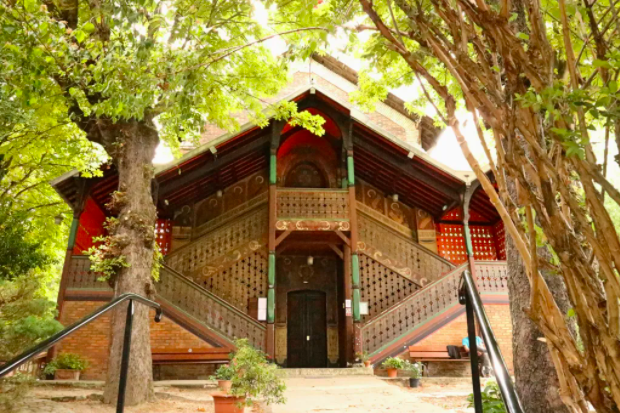
Saint Sergius Orthodox Church and Theological Institute
One of the most curious places of worship in Paris is hidden down a verdant lane near the Buttes-Chaumont Park. Originally commissioned as a German Lutheran church, it was abandoned after WWI and converted into a Russian Orthodox theological centre and church in 1925. The gate is open during the day and so you can pop in to have a look at the exterior, but if you come on Sunday mornings, you can take a peek at the interiors during service.
Address: 93 Rue de Crimée, 75019 Paris. Website
Au Roi de la Bière
To finish on a fun note, we’re taking you to look at the most unusually looking fast-food restaurant in Paris. Now a McDonald’s, this building across from the Saint-Lazare train station was built as an Alsatian brasserie in 1892. After Alsace and Lorraine were annexed to Germany at the defeat of the French in the 1870 Franco-Prussian War, many residents loyal to France moved to the Parisian capital. They brought their beer brewing traditions with you, which led to the opening of brasseries across the city and Au Roi de la Biére, or “The King of Beer” in English, was one of these. Designed to look like an Alsatian half-timbered house, and decked out in beer steins and a statue of Gambrinus (the legendary King of Beer), since it was classified as a national monument in 1997 McDonald’s could move it, but had to leave its facade untouched. So if you go here for a Big Mac, order a beer to go with it!
Address: 119 Rue Saint-Lazare, 75008 Paris
